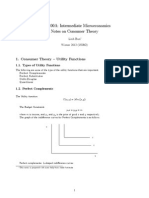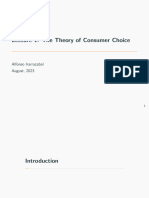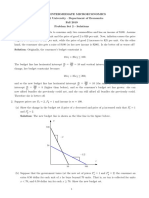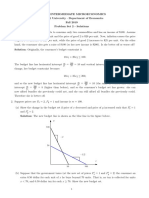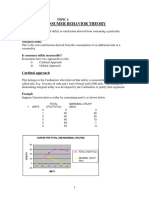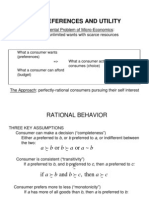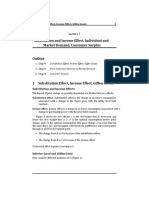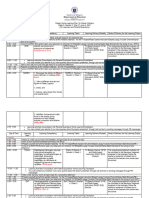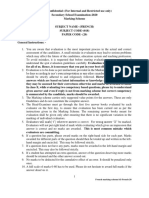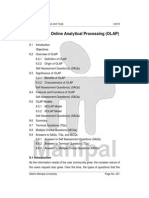0% found this document useful (0 votes)
47 views9 pagesDeriving MRS From Utility Function, Budget Constraints, and Interior Solution of Optimization
1. The document discusses deriving the marginal rate of substitution (MRS) from a utility function. MRS is the slope of the indifference curve and represents the rate at which a consumer is willing to substitute one good for another to maintain the same level of utility.
2. It also discusses the budget constraint, which shows the combinations of goods that are affordable given prices and income. The slope of the budget line represents the rate at which a consumer must give up one good to obtain more of another good.
3. When prices or income change, the budget line shifts or rotates accordingly, altering the set of affordable bundles.
4. For an interior solution where both goods are consumed in positive amounts,
Uploaded by
dijojnayCopyright
© © All Rights Reserved
We take content rights seriously. If you suspect this is your content, claim it here.
Available Formats
Download as DOCX, PDF, TXT or read online on Scribd
0% found this document useful (0 votes)
47 views9 pagesDeriving MRS From Utility Function, Budget Constraints, and Interior Solution of Optimization
1. The document discusses deriving the marginal rate of substitution (MRS) from a utility function. MRS is the slope of the indifference curve and represents the rate at which a consumer is willing to substitute one good for another to maintain the same level of utility.
2. It also discusses the budget constraint, which shows the combinations of goods that are affordable given prices and income. The slope of the budget line represents the rate at which a consumer must give up one good to obtain more of another good.
3. When prices or income change, the budget line shifts or rotates accordingly, altering the set of affordable bundles.
4. For an interior solution where both goods are consumed in positive amounts,
Uploaded by
dijojnayCopyright
© © All Rights Reserved
We take content rights seriously. If you suspect this is your content, claim it here.
Available Formats
Download as DOCX, PDF, TXT or read online on Scribd
/ 9











